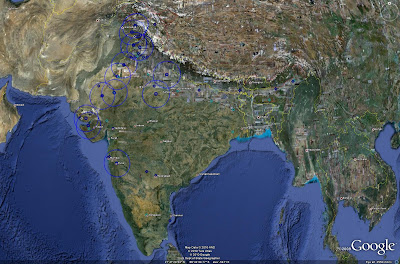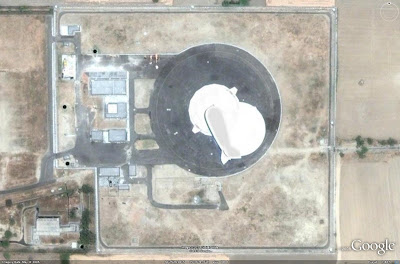Lankan Ranger
ELITE MEMBER

- Joined
- Aug 9, 2009
- Messages
- 12,550
- Reaction score
- 0
The Indian SAM Command
INTRODUCTION
One of the most populous nations in the world, India has engaged in numerous regional conflicts in the past. The threat environment led to the creation of a point-defense oriented EW and SAM network designed not to protect the skies over India, but to protect the military units tasked with such a role. This ultimately led to the creation of a number of EW and SAM units within the Indian Air Force.
OVERVIEW
Indian air defense elements, to include EW assets, SAM systems, and interceptors, are subordinate to the Indian Air Force (IAF). This allows the IAF to coordinate both sensors and weapons, allowing for a maximum degree of target deconfliction. SAM units are organized as squadrons, with radar units being organized as either signal units or transportable radar units, depending on the assigned types. These units are in turn subordinate to the five operational commands in the IAF.
The Indian SAM network follows a point defense layout. The primary SAM system employed by the IAF is the S-125M (SA-3B GOA). These systems are deployed at various airbases in the northern and western portions of India. EW assets are deployed primarily along border regions, with the highest concentration being present along the northern and western borders with Pakistan.
EW ASSETS
Fifty four EW sites have been identified in India. The primary assets are THD-1955, P-12/18 (SPOON REST), and 36D6 (TIN SHIELD) radars. Thirteen THD-1955 radars arrayed primarily along the border region from Pakistan to Myanmar provide a significant amount of EW coverage. EW coverage is enhanced by fourteen 36D6 radar sites, arrayed primarily along the border with Pakistan. The 36D6 is significant as it can provide both target track data to SAM batteries as well as GCI support for Russian-origin fighter aircraft such as the MiG-29 (FULCRUM) or Su-30MKI (FLANKER-H). P-12/18 radar sites are scattered throughout the region, as are indigenous Indra-II radar units. The net result is an EW network that is heavily oriented towards potential threats.
The following image depicts the locations of identified Indian EW facilities. Dark blue diamonds represent basic EW sites, typically manned by P-12/18 or Indra-II radar systems, while light blue diamonds represent THD-1955 radar facilities. Blue circles represent 36D6 radar facilities. The range rings given for the 36D6 sites represent the 165 km acquisition range against a typical fighter-size target. Each radar system is capable of target detection at greater ranges depending on the target RCS and altitude, with the THD-1955 typically employing a range of 400 km.

The following image depicts a typical THD-1955 site. These large radars are sited atop dedicated structures. This site is located south of Shillong in eastern India.

The following image depicts a deployed 36D6 radar at Pune AB in western India. This radar likely serves as both an EW and GCI asset, given its co-location with Su-30MKI fighters.

INTRODUCTION
One of the most populous nations in the world, India has engaged in numerous regional conflicts in the past. The threat environment led to the creation of a point-defense oriented EW and SAM network designed not to protect the skies over India, but to protect the military units tasked with such a role. This ultimately led to the creation of a number of EW and SAM units within the Indian Air Force.
OVERVIEW
Indian air defense elements, to include EW assets, SAM systems, and interceptors, are subordinate to the Indian Air Force (IAF). This allows the IAF to coordinate both sensors and weapons, allowing for a maximum degree of target deconfliction. SAM units are organized as squadrons, with radar units being organized as either signal units or transportable radar units, depending on the assigned types. These units are in turn subordinate to the five operational commands in the IAF.
The Indian SAM network follows a point defense layout. The primary SAM system employed by the IAF is the S-125M (SA-3B GOA). These systems are deployed at various airbases in the northern and western portions of India. EW assets are deployed primarily along border regions, with the highest concentration being present along the northern and western borders with Pakistan.
EW ASSETS
Fifty four EW sites have been identified in India. The primary assets are THD-1955, P-12/18 (SPOON REST), and 36D6 (TIN SHIELD) radars. Thirteen THD-1955 radars arrayed primarily along the border region from Pakistan to Myanmar provide a significant amount of EW coverage. EW coverage is enhanced by fourteen 36D6 radar sites, arrayed primarily along the border with Pakistan. The 36D6 is significant as it can provide both target track data to SAM batteries as well as GCI support for Russian-origin fighter aircraft such as the MiG-29 (FULCRUM) or Su-30MKI (FLANKER-H). P-12/18 radar sites are scattered throughout the region, as are indigenous Indra-II radar units. The net result is an EW network that is heavily oriented towards potential threats.
The following image depicts the locations of identified Indian EW facilities. Dark blue diamonds represent basic EW sites, typically manned by P-12/18 or Indra-II radar systems, while light blue diamonds represent THD-1955 radar facilities. Blue circles represent 36D6 radar facilities. The range rings given for the 36D6 sites represent the 165 km acquisition range against a typical fighter-size target. Each radar system is capable of target detection at greater ranges depending on the target RCS and altitude, with the THD-1955 typically employing a range of 400 km.

The following image depicts a typical THD-1955 site. These large radars are sited atop dedicated structures. This site is located south of Shillong in eastern India.

The following image depicts a deployed 36D6 radar at Pune AB in western India. This radar likely serves as both an EW and GCI asset, given its co-location with Su-30MKI fighters.








